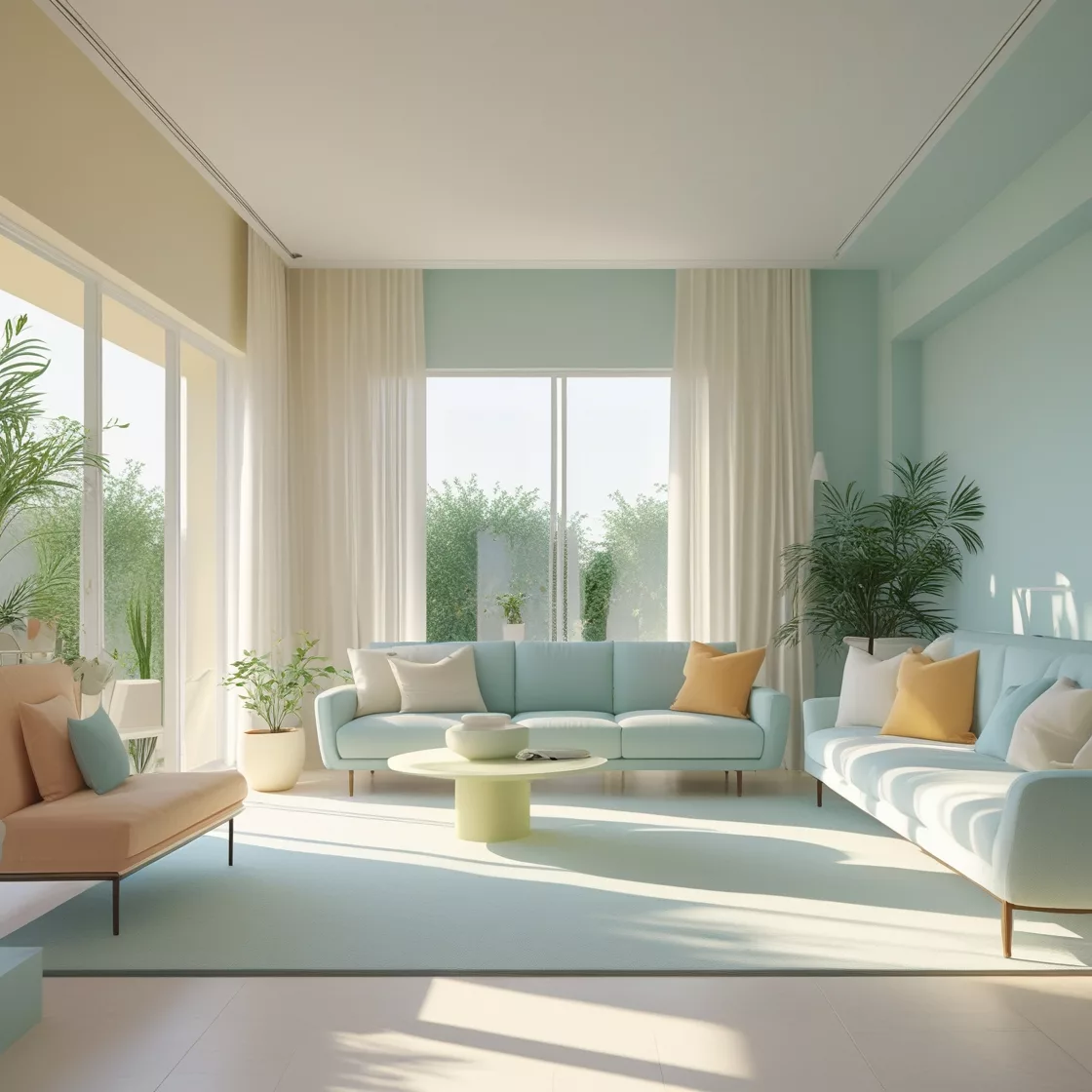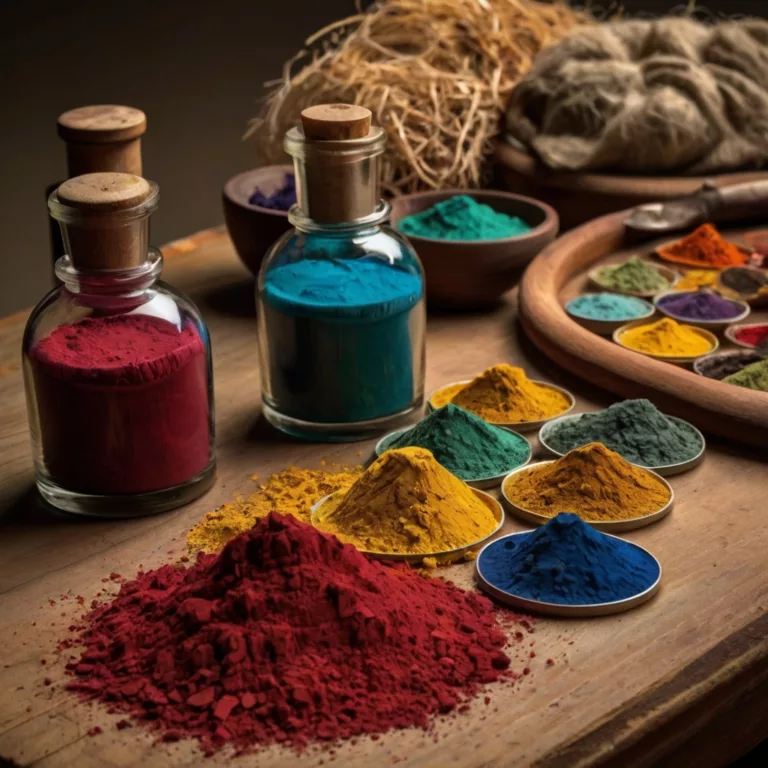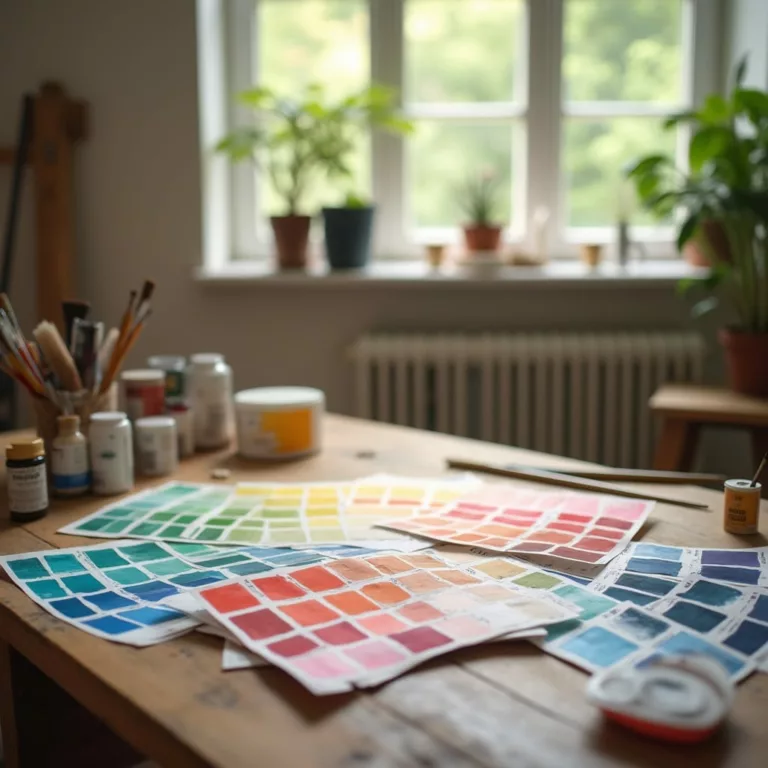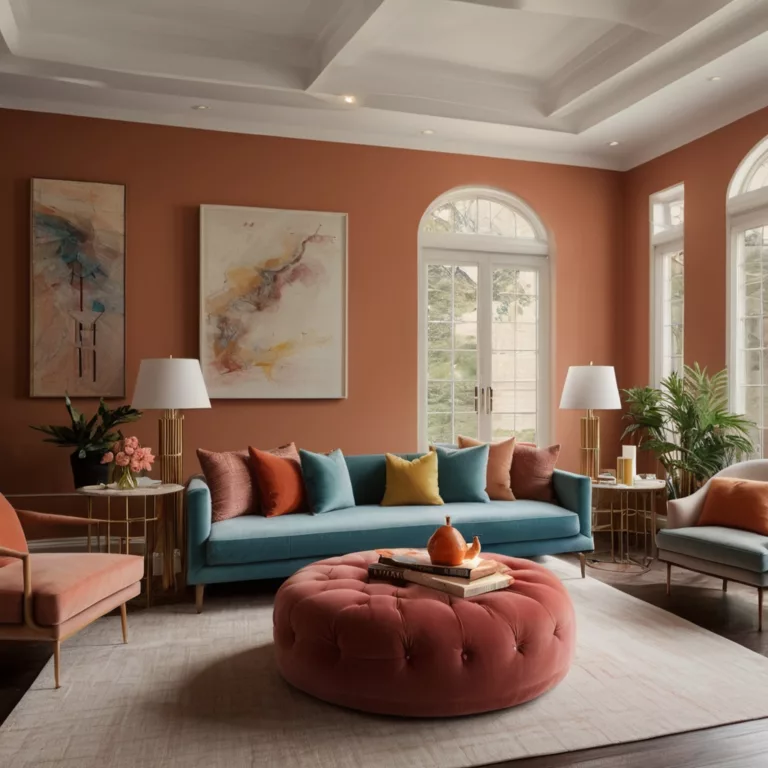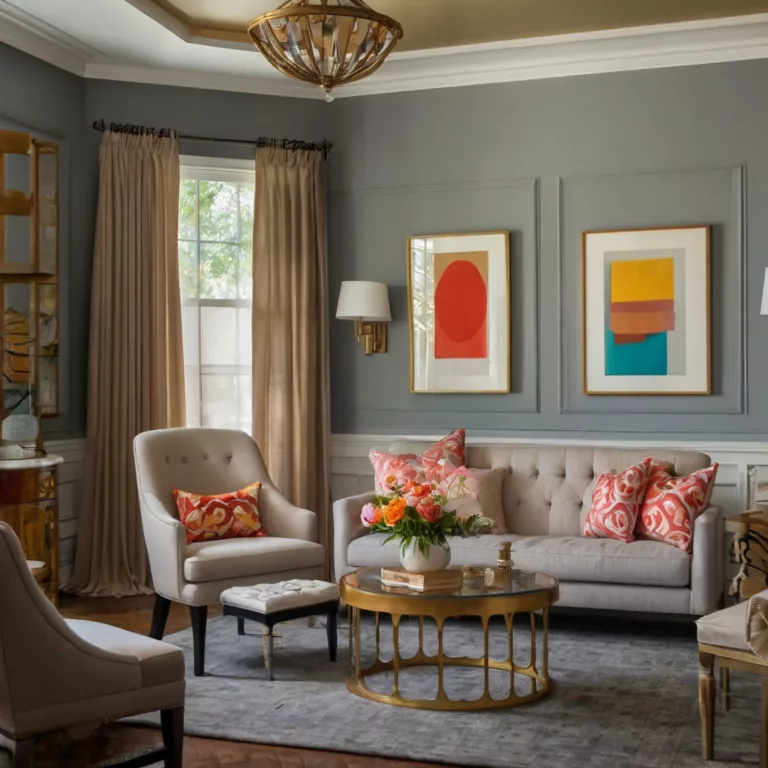Home Paints That Make Your Room Look Bigger:
The Transformative Power of Paint
When it comes to interior design, few elements have as dramatic an impact as paint. The right color choice can completely transform a space, altering not just its appearance but also its perceived size and dimensions. For homeowners with smaller rooms or those simply wanting to create an airier, more expansive feel, selecting the proper paint colors and application techniques is essential. In this comprehensive guide, we’ll explore everything you need to know about home paints that make your room look bigger, from color psychology to application methods and beyond.
Understanding How Color Affects Spatial Perception
The Science Behind Color and Space
Before diving into specific paint colors, it’s important to understand the psychological and optical effects colors have on our perception of space. Light colors tend to reflect more light, making walls appear to recede and spaces feel larger. Conversely, dark colors absorb light, making surfaces appear closer and spaces feel more confined.
This phenomenon is based on how our brains process visual information about depth and distance. Colors with higher light reflectance values (LRV) bounce more light around a room, creating an expanded feeling. Home paints that make your room look bigger typically have higher LRVs and work with the natural or artificial light in your space.
The Role of Light in Color Perception
The lighting in your room—whether natural or artificial—plays a crucial role in how paint colors appear. The same paint color can look dramatically different under various lighting conditions:
- North-facing rooms receive cooler, more indirect sunlight
- South-facing rooms enjoy warm, direct sunlight throughout the day
- East-facing rooms get bright morning light but cooler afternoon light
- West-facing rooms experience cooler morning light and warm afternoon light
When selecting home paints that make your room look bigger, consider your room’s orientation and lighting conditions to maximize the space-enhancing effects of your chosen colors.
Best Paint Colors to Make Rooms Look Bigger
White and Off-White: The Classic Space Enhancers
White remains the go-to color for creating an illusion of space, and for good reason. Pure whites and off-whites reflect maximum light, making walls appear to recede and ceilings feel higher. Some excellent white paint options include:
- Benjamin Moore’s “Simply White” – A clean, crisp white with minimal undertones
- Sherwin-Williams’ “Alabaster” – A soft, warm white that avoids feeling sterile
- Behr’s “Ultra Pure White” – A bright, true white with maximum light reflection
However, don’t assume all whites are created equal. Whites with particular undertones (yellow, pink, blue) can dramatically alter the feel of a space. When choosing white paint for small spaces, consider the room’s lighting and other elements to select a white with complementary undertones.
Light Blues and Greens: Inspired by Nature
Colors reminiscent of the sky and sea naturally evoke feelings of openness and expansiveness. Light blues and soft greens create a sense of airiness that can make home paints that make your room look bigger particularly effective. Consider these options:
- Benjamin Moore’s “Breath of Fresh Air” – A light, airy blue that mimics a clear sky
- Sherwin-Williams’ “Sea Salt” – A versatile gray-green with a hint of blue
- Behr’s “Watery” – A tranquil, light blue-green that expands space
These nature-inspired hues work especially well in bathrooms, bedrooms, and other spaces where a calm, expansive feeling is desired.
Soft Grays and Greiges: Sophisticated Space Creators
Modern neutral palettes often revolve around grays and “greiges” (gray-beige combinations). These sophisticated neutrals can make a room feel larger while adding more depth and interest than plain white. Top choices include:
- Benjamin Moore’s “Gray Owl” – A light gray with subtle undertones that adapt to different lighting
- Sherwin-Williams’ “Agreeable Gray” – A perfect greige that bridges warm and cool tones
- Behr’s “Silver Drop” – A pale gray with warm undertones that expands space
Gray tones work exceptionally well in living areas and hallways, creating a contemporary look while visually expanding the space.
Pale Pastels: Subtle Space Enhancers
Soft pastel tones can brighten a room while adding just enough color interest. When kept light and airy, pastels can be excellent home paints that make your room look bigger. Consider these options:
- Benjamin Moore’s “Pink Bliss” – An extremely pale pink that reads almost like a neutral
- Sherwin-Williams’ “Minute Mauve” – A barely-there lavender with space-expanding properties
- Behr’s “Songbird” – A whisper-soft yellow that brightens without overwhelming
Pastels work best in bedrooms, nurseries, and spaces where a touch of color is desired without sacrificing spatial expansion.
Paint Application Techniques That Create More Space
Monochromatic Color Schemes
One of the most effective ways to make a room appear larger is to use a monochromatic color scheme. By using varying shades and tints of the same color family, you create a seamless, uninterrupted visual flow that expands the perceived space. This technique eliminates harsh transitions between colors that can make a room feel chopped up and smaller.
For example, paint walls in a light blue, use a slightly darker blue for trim, and perhaps a still darker shade for select accessories. This creates depth while maintaining a cohesive, space-enhancing feel.
The Fifth Wall: Ceiling Treatments
Don’t forget about the ceiling—often called the “fifth wall” in interior design. For maximum space expansion, consider these ceiling treatment options:
- Paint the ceiling the same color as the walls to eliminate the visual boundary where the wall ends
- Choose a ceiling color slightly lighter than the walls to draw the eye upward
- Add a hint of color to an otherwise white ceiling to create subtle interest without lowering height perception
A flat or matte finish is typically best for ceilings, as it hides imperfections while maximizing the space-enhancing effects of home paints that make your room look bigger.
The Power of Stripes
Strategic use of stripes can dramatically alter spatial perception:
- Horizontal stripes make a room appear wider
- Vertical stripes make ceilings appear higher
Consider using subtle tone-on-tone stripes or applying stripes to just one accent wall for maximum impact without overwhelming the space.
Strategic Color Placement for Maximum Spatial Effect
The Receding Wall Technique
To make a narrow room appear wider, paint the shorter end walls in a slightly darker shade than the longer side walls. This “receding wall” technique creates the illusion that the darker walls are farther away, effectively balancing the room’s proportions.
Unifying Adjacent Spaces
In open floor plans or connected rooms, using the same or complementary light colors throughout creates continuity that makes the entire space feel larger. Avoid abrupt color changes that can visually chop up space and make it feel smaller.
Color Blocking for Dimension
Strategic color blocking—using defined areas of different colors—can draw the eye to specific areas and create the illusion of depth. When using home paints that make your room look bigger, consider color blocking to highlight architectural features or create zones in multipurpose rooms.
Choosing the Right Paint Finish
The sheen or finish of your paint plays a significant role in how spacious a room appears:
- Flat/Matte – Absorbs light, hides imperfections, best for ceilings and low-traffic areas
- Eggshell/Satin – Slight sheen reflects some light, more durable, good for most living spaces
- Semi-gloss/Gloss – Highly reflective, bounces light around the room, making it appear larger
In small spaces, a strategic mix of finishes can enhance the spacious feel. Consider an eggshell finish for walls with semi-gloss on trim for a subtle contrast that expands the space.
Color Combinations That Maximize Space
Tone-on-Tone Elegance
Using varying shades and tones within the same color family creates subtle depth without chopping up the visual flow of a room. This technique is particularly effective with neutral palettes and creates a sophisticated, expansive feel.
The 60-30-10 Rule
When incorporating multiple colors, follow the classic interior design principle of the 60-30-10 rule:
- 60% dominant color (usually walls)
- 30% secondary color (upholstery, bedding, large accents)
- 10% accent color (accessories, artwork)
This balanced approach creates interest without overwhelming a small space or making it feel cluttered and smaller.
Real-World Examples: Before and After Transformations
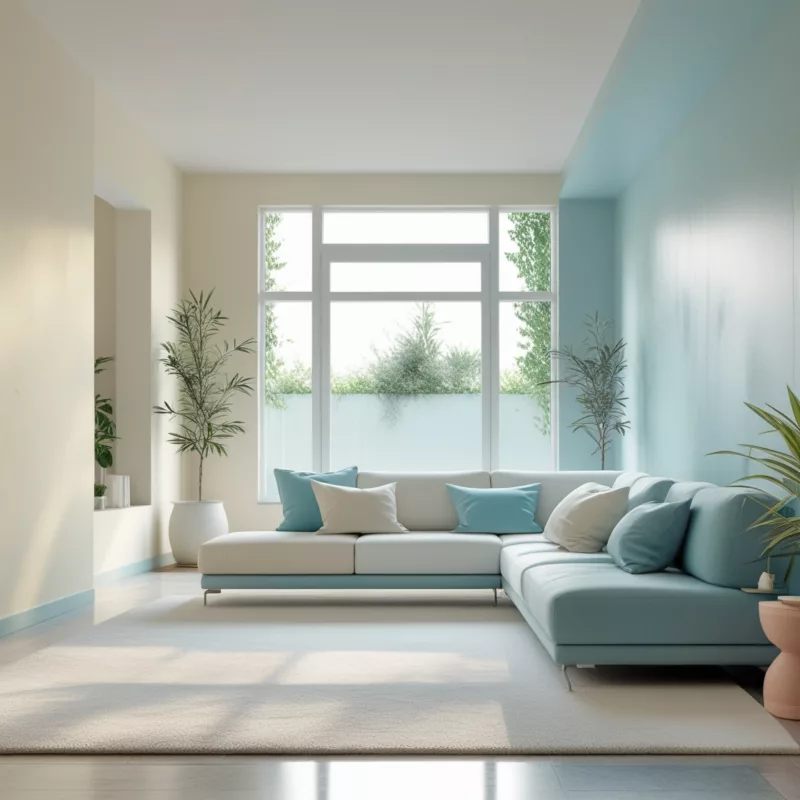
Case Study 1: Small Urban Apartment
A 500-square-foot apartment in Chicago was transformed from dark and cramped to airy and expansive using Benjamin Moore’s “Cloud White” on walls and ceiling, with soft gray accents. The monochromatic approach, combined with strategic mirrors and light-reflecting surfaces, visually doubled the perceived space.
Case Study 2: Narrow Victorian Hallway
A long, narrow hallway in a Victorian home was transformed using the receding wall technique. The end walls were painted in Sherwin-Williams’ “Rainwashed” (a soft blue-green), while the long side walls used the lighter “Sea Salt.” This simple change balanced the proportions and made the space feel wider and more welcoming.
Professional Tips for Application
Preparation Is Key
Proper preparation leads to better results:
- Fill holes and cracks
- Sand rough surfaces
- Prime walls, especially when making significant color changes
- Use quality brushes and rollers designed for your chosen paint finish
Lighting Considerations
When applying home paints that make your room look bigger, consider installing additional lighting sources to maximize the space-enhancing effects of your color choices. Multi-level lighting with a mix of ambient, task, and accent lighting helps paint colors read true while eliminating shadows that can make spaces feel smaller.
Expert Application Techniques
- Paint from top to bottom (ceiling, walls, trim)
- Use the “W” technique for roller application to ensure even coverage
- Apply thin coats rather than one thick coat for the most professional finish
- Allow proper drying time between coats
Complementary Design Elements
Mirrors and Reflective Surfaces
Strategically placed mirrors amplify the space-expanding effects of light paint colors. Consider:
- Wall-to-wall mirrors on one surface
- Mirrored furniture pieces
- Metallic or glass accessories that reflect light
Furniture Scale and Placement
Even with the perfect home paints that make your room look bigger, oversized furniture can negate the space-expanding effects. Choose appropriately scaled pieces and leave breathing room between furniture and walls to maximize the perceived space.
Window Treatments
To maintain the spacious feel created by your paint choices:
- Mount curtain rods close to the ceiling and extend beyond the window frame
- Choose window treatments in colors similar to your wall color
- Consider light-filtering options that maximize natural light
Environmental and Health Considerations
Low-VOC and Zero-VOC Options
Many modern paints offer low-VOC (Volatile Organic Compounds) or zero-VOC formulations that reduce indoor air pollution without sacrificing color quality or performance. These environmentally friendly options are particularly important in small spaces where air circulation may be limited.
Sustainable Paint Choices
For environmentally conscious consumers, several brands offer sustainable home paints that make your room look bigger:
- Benjamin Moore Natura – Zero-VOC with a wide range of light-reflective colors
- Sherwin-Williams Harmony – Zero-VOC formula that actually helps improve indoor air quality
- Behr Premium Plus – Low-VOC option at a more accessible price point
Seasonal Considerations for Small Spaces
Adapting to Changing Light
Natural light changes with the seasons, potentially affecting how your paint colors read:
- Summer may intensify colors due to stronger sunlight
- Winter’s darker days may make colors appear more muted
When selecting home paints that make your room look bigger, consider how the colors will appear throughout the year under different lighting conditions.
Seasonal Color Adaptations
Some homeowners opt for slightly different color schemes for different seasons:
- Lighter, cooler tones for summer to create a more refreshing atmosphere
- Slightly warmer versions of space-enhancing colors for winter to maintain coziness without sacrificing spaciousness
This can be achieved through accessories rather than repainting, but understanding how your base paint colors interact with seasonal changes is important.
Budget-Friendly Approaches
Sample Before Committing
Purchase sample pots and test colors on multiple walls before committing. The cost of samples is minimal compared to the expense and disappointment of choosing the wrong color.
Strategic Painting
If budget constraints prevent painting an entire home, focus on:
- Rooms that feel most cramped
- Spaces where you spend the most time
- One statement wall in smaller rooms
DIY vs. Professional Application
While DIY painting can save money, professional application often yields superior results, especially in small spaces where imperfections are more noticeable. Consider allocating budget for professional help in rooms where precision matters most.
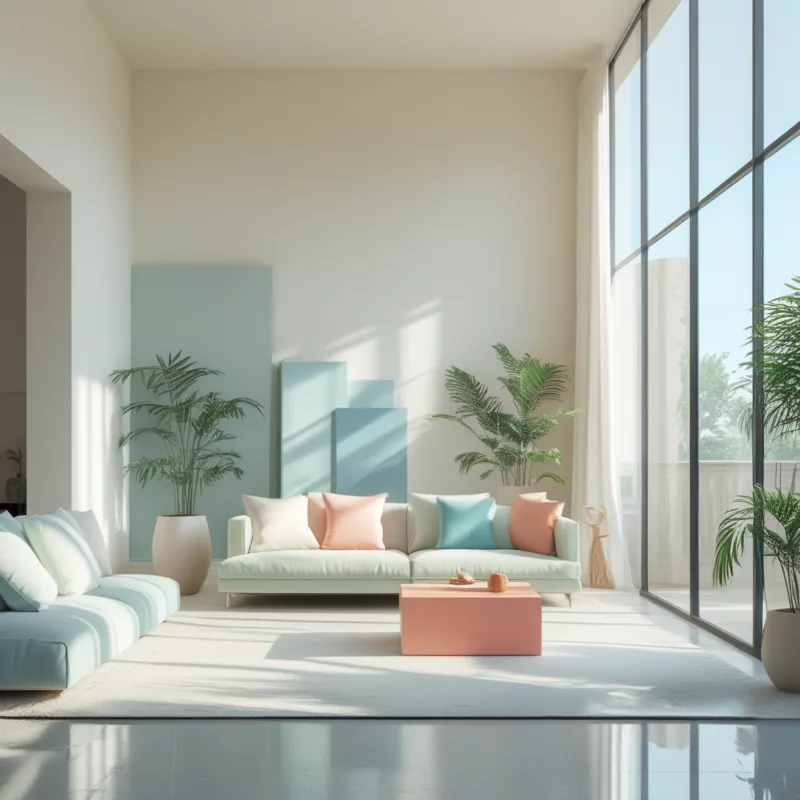
Conclusion: The Transformative Power of Paint
Paint remains one of the most cost-effective ways to dramatically transform the feel and perceived size of a space. By understanding color psychology, light reflection, and strategic application techniques, you can select home paints that make your room look bigger and more inviting.
Whether you’re working with a tiny urban apartment or simply want to maximize the feel of your current space, the right paint choices can create an environment that feels open, airy, and significantly larger than its actual dimensions. Remember that color is personal while these guidelines provide a starting point, ultimately the colors that make you feel happy and comfortable in your space are the right ones for you.
Resources and Further Reading
- The Color Psychology of Space
- Benjamin Moore Color Consulting Services
- Sherwin-Williams ColorSnap® Visualizer
- International Association of Color Consultants
- How Light Affects Paint Color
Remember that colors appear differently on digital screens always test actual paint samples in your space before making final decisions about home paints that make your room look bigger.
This article was prepared by interior design and color specialists with extensive experience in space-enhancing paint applications. For personalized advice about your specific space, consider consulting with a professional color consultant Art11deco
Art11deco

